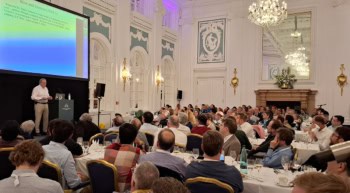Two teams of physicists in the US have managed to capture pulses of light in a gas, and then release the pulses a fraction of a second later. This feat - which involves reducing the speed of light in the gas to zero - could be used to store information and may also have applications in quantum information processing.
Ron Walsworth, Mikhail Lukin and colleagues at the Harvard-Smithsonian Center for Astrophysics trapped the pulses in a gas of rubidium atoms that had been cooled to between 70 and 90 kelvin (D F Phillips et al 2001 Phys. Rev. Lett. 86 783). Meanwhile, Lene Vestergaard Hau and co-workers at the Rowland Institute for Science and Harvard University used sodium atoms that had been cooled to 0.9 microkelvin in a magnetic trap (C Liu et al 2001 Nature 409 490).
In both experiments a coupling laser is used to drive transitions between two internal energy levels in the atoms. Next a weaker laser that is resonant with one of these levels and a third level is sent into the gas cell. Normally this probe laser would be absorbed by the gas. However, quantum interference effects caused by the first laser mean that the probe laser is slowed down rather than absorbed.
In 1999 Hau and co-workers showed that light could be slowed from 300 million metres per second to just 17 metres per second in a sodium gas. Now her group and that of Walsworth and Lukin have lowered the speed of light to absolute zero. The laser pulse in Hau’s experiment was 3.4 kilometres long in free space, yet it could be stored in a gas cell that was less than half a millimetre in size. In both experiments the laser pulse is trapped in the gas by turning off the coupling laser. The pulse can be regenerated by switching the coupling laser back on.
These experiments are the latest in a series of demonstrations of the novel properties of light in atomic gases. Last year, for instance, Lijun Wang and colleagues at NEC Research in Princeton used similar principles to send a laser pulse through a gas of caesium atoms at more than 300 times the speed of light.



